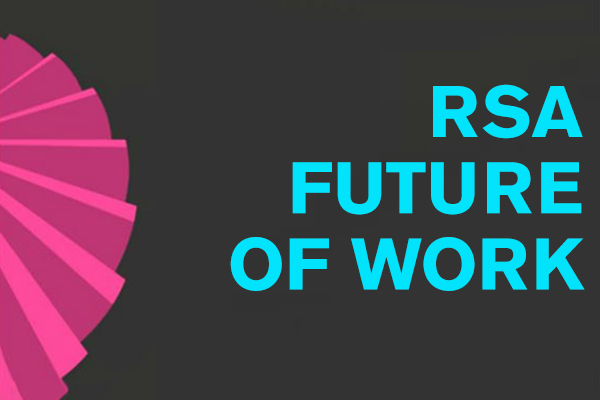In the early nineteenth century, the teething years of the Industrial Revolution, there was a great divergence between economic growth and wages. This divergence lasted for decades. This was a logical relationship as Robert C Allen explored recently in Nature. As technology destroys skilled work (think the Luddites), it shifts labour to low wage-low productivity settings and this exerts further downward pressure on wages. Are we experiencing a similar trend now, what will be the impacts if so, and how should we respond?

The story does seem to fit somewhat. In both the US and UK, wages and productivity have diverged. This is entirely consistent with notions of unbalanced growth. Sectors with super-productivity generate high returns for those with high-value skills and super-normal profits for those who possess valuable intellectual property. As an aside, these pools of capital can then be deposited in tax havens. The Paradise papers are the other side of the super-productivity of certain sectors (some of this comes from value creation, some from technological deployment, and some from off-shoring). Meanwhile, there is downward pressure on wages at the bottom end.
By way of illustration, Adair Turner points out in a recent podcast conversation with Izabella Kaminska, there is a theoretical link between hyper-efficient distributional mega-warehouses and the low wage workforce. High productivity industries (and distribution centres are more factory-like than service sector like) go together with low wage, low productivity sectors as spare labour pushes and holds down wages at the lower pay end of the workforce. The cheap cost of labour reduces the incentive to invest in skills and training and undertake costly investments in unproven capital – people are a bargain! If you can pay someone near the National Living Wage to serve sandwiches, what’s the real incentive to replace them with a machine?
The more a workplace is factory-like, the more likely it is that its labour will be replaced over time. Predictable tasks in single large, high employment settings are ripe for technological displacement. This is why the trend for growth in higher paid employment in mega-distribution that my colleague Fabian Wallace-Stephens has outlined, may tilt into future job losses (with good wages for those who remain employed in the sector). And this is not just a future trend – this process has been emerging for at least a couple of decades. What is the future of jobs?
Well, it might look rather like the past couple of decades: growth in jobs at the top and the bottom but a decline in work of the middle. So we are not talking mass obsolescence of work; it is more a case of structural change and redistribution of work and pay. There will be geographical, gender, and ethnic winners and losers - there always is. And that is why such change, especially if rapid as it was in the 1980s and indeed the 1800s, can have such strong social and political impacts.
In the same podcast referenced above, Kaminska pointed out that the growth of the artisanal sector is part of this story also. This is entirely right. The income from high productivity growth sectors (technology in Silicon Valley, finance, media, design and professional services in London) has been accompanied by the growth of the artisanal economy. Wage growth at the top end seeks out bespoke goods and services – such as new cuisines, personalised interior design, craft culture writ large. It’s easy to get sniffy about hipsters and the like but this is a growth sector with good, creative, high value work to offer. And the demand spreads from marginal to mainstream over time.
The public sector holds the middle alongside skilled craft work and is a vital anchor in non-metropolitan areas. Destroy middle class public sector jobs and wages and you destroy the areas of the country that rely on them. You remove ladders to opportunity in the process.
Suddenly, a picture of modern work begins to emerge. Huge gains accrue to those with rare and in demand skills and a reserve army of workers emerge with skills in abundant supply. Middle income work in the public sector and the artisanal economy anchors the centre but the pressures are towards the top and bottom. Downward wage pressure is only limited by minimum wages and occasional bottle-necks.
Certainly, amongst male workers, this is a strong picture that emerges. As the IFS has recently outlined, market inequality levels (pre-tax and benefits) amongst male workers has been on a largely upward trajectory – albeit with a few tall flowers being cut back to a degree in post-crash in the UK.
The same report from the IFS also outlines how UK tax, benefits and wages policy has helped shield the lowest income households from the full force of growing market inequality. In so doing, the UK has been able to stem the growth of household (post tax and benefits) inequality for almost two decades and, with the hit to top end salaries post-crash, inequality has even declined slightly. That the fate of so few of the lowest paid has improved suggests why inequality as a sole measure is inadequate. Barely a fifth of the low paid escape low paid work over the course of a decade. In any given four year period, 30 percent of people experience poverty. The human experience matters as much as the spreadsheets and formulae. Poverty is not just about cash; it’s also about the damage it causes to individuals and families and how that insecurity echoes across time leaving people stuck.
There are two problems with the UK approach, however: productivity and the experience of inequality. As Ben Dellot points out in the Age Of Automation, the worst thing the UK could do is continue to fail to invest in productivity enhancing technologies. Even if pay increases and productivity are decoupled now as in the early nineteenth century, none of our problems as an economy and society will be resolved by forgoing growth now. The difference between now and the decades of the early nineteenth century are that not only are pay and productivity decoupled but the growth of productivity is anaemic in addition. Economic stagnation may be a good way to mitigate inequality but it is an extremely bad way.
Meanwhile, even though market inequality is mitigated in cash terms, the experience of it is severe. People get a regular flavour of poverty in an insecure jobs market underpinned by a harsh welfare regime. They are compensated at the end of this process but that doesn’t deaden the stress and anxiety-ridden dynamic of market inequality.
There is a higher road. The big risk we are taking currently is that we end up with not only inequality, but economic and social stagnation. By continuing to fail to invest properly in technological innovation, the UK is falling into the stagnation trap – for all the self-congratulation on employment rates and slightly declining inequality. The US case is different: they have managed to reignite productivity growth but the decoupling of productivity and pay remains an issue. Both countries face a stuttering economic engine in its ability to create a sense of upward mobility for the majority.
A number of consequences flow from this negative equilibrium. Firstly, productivity is fundamental. Without addressing productivity, ongoing issues of inequality, insecurity and frequent poverty will remain intractable. Secondly, addressing productivity alone is not sufficient given the decoupling of productivity and pay. Thirdly, mitigating the impacts of market inequality through the tax and benefits system is essential. But, finally, that in itself does not disrupt the unequal impact of technology on employment. Market inequality itself has to be confronted. The growth of low pay work sits alongside the modern system of tax credits and minimum wages. In the case of tax credits, it is a component of the low pay insecurity dynamic. However, minimum wages mitigate negative impacts of the current dynamic for those on low pay.
All of the above suggest a need for a very big strategic response of the magnitude that only the state may be capable of leading (even in its faltering and weakened modern manifestation). In essence, this requires a new political economy. The response would include major investment in science, research and technological deployment by the state – including within public services. It would require a mass upskilling of the workforce, not only in technical skills but in type of creative capabilities that could expand the artisanal workforce, i.e. high end, direct and personal to the consumer goods and services. Financial support for this training must be given to both individuals and firms (including small firms) and combined with good advice, provision and support.
A welfare system that not only mitigates but confronts market inequality is necessary. A recent IMF report hypothesises that Basic Income increases wages whilst the current system exerts downward pressure on them. And more aggressive minimum and living wages in particular sectors will be essential. Interventions to reduce living costs such as housing can help further. And redistribution of enormous pools of wealth and capital, corporate and individual, have to be part of this new political economy.
At the beginning of the nineteenth century, they did not have the huge volume of research into technology, productivity, wages, jobs and economic history that we now have at disposal. We can sit back and hope that the days of high productivity and widespread distribution of the middle of the last century return or we can accept that they may not do of their own accord. To create a positive sum dynamic, a higher equilibrium where there was both growth and it was inclusive, took institutional, political and fiscal innovation. The same scale of response is likely to be needed now. Without it, get used to unbalanced growth. Or potentially even worse, get used to unbalanced stagnation.


Join the discussion
Comments
Please login to post a comment or reply
Don't have an account? Click here to register.
Excellent article. A major component of the very low levels of productivity in UK plc versus our international competitors is that large swathes of British industry have become addicted to low wages, particularly the hospitality, transport/logistics and food production sectors. As services account for c80% of our economy such wage levels have a disproportionate effect. It is precisely the decision to build their businesses on the supply of low-wage workers, often from Eastern Europe, that now worries many companies due to Brexit.
We have a productivity problem because so many businesses are badly managed. Automation and AI may mitigate the effects of low wages by getting rid of the jobs paid at this level. Unemployment therfore mirrors producitvity on an upward curve.